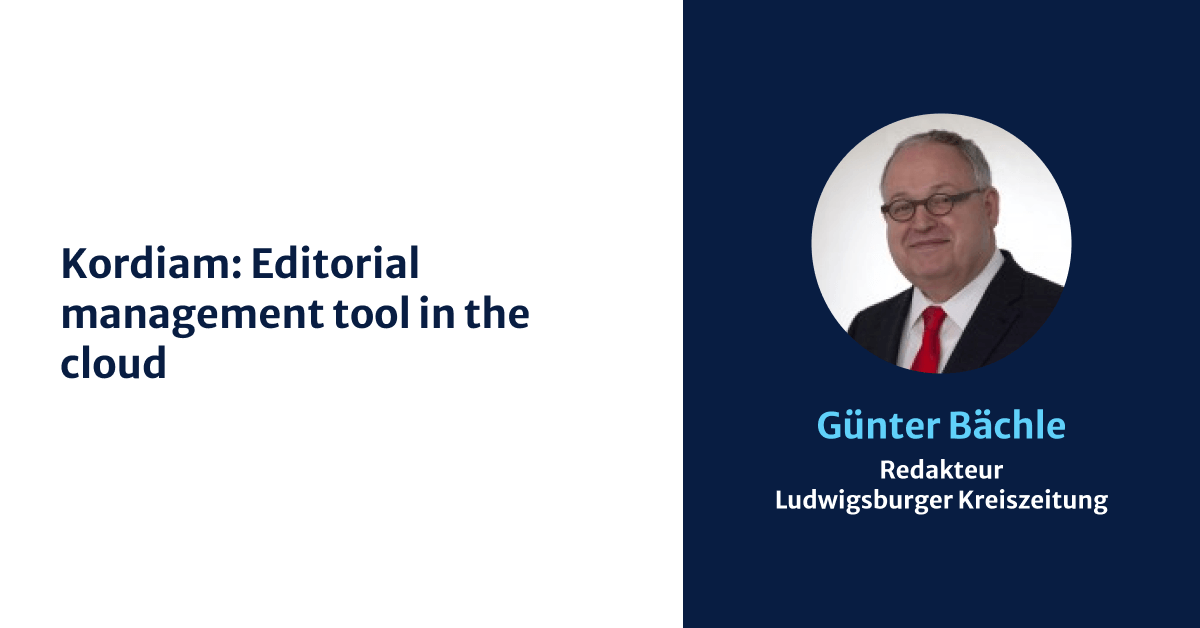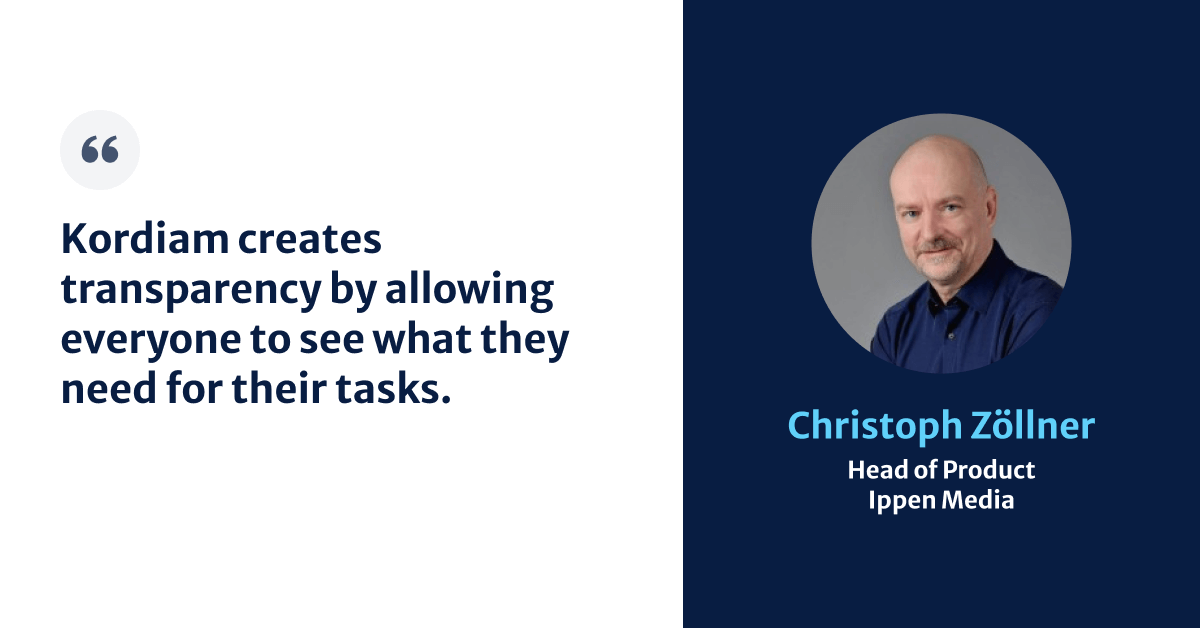Enhancing Editorial Planning with Kordiam - How NZZ Manages Complexity Across Platforms
Zurich's NZZ (Neue Zürcher Zeitung) used Kordiam's content planning tool to shrink their meetings, minimize time-wasting, and maximize control across multiple new products and platforms. Here's how.
The Zurich-based Neue Zürcher Zeitung has expanded rapidly from newspaper to online and now publishes a range of digital products. André Maerz is the Workflow Manager with NZZ. Having rolled Kordiam out to some 300 users across NZZ, he explains how it is helping span the gaps across different desks and different media platforms.
Why the Need for Kordiam in Editorial Planning?
“We use Kordiam to plan across different media, channels, and sub-channels. Every topic that is going to be covered is planned into Kordiam.
That means the website, then the mobile website which differs from the desktop version. In addition, we have products like Select which is an online tool that collects the ten most important articles of the day and distributes them as an editor's selection.
Then we have the highly successful Daily Briefing, which is a constantly updated collection of what's important right now and distributed by email that users subscribe to, not forgetting the traditional paper.
We're an old newspaper - we started in 1780 and we're quite used to paper but we've seen a growing need for coordination across activities, not least since we now have sales teams working across print and online.
Previously, editorial planning was done with a PDF form that was printed out and distributed. If you had a copy, you were one of the privileged few in the know – and if you weren't one of those then you had the problem of finding out what was going on and who was responsible for what.
Now we've introduced editorial planning software it's much better. We have just changed our printing partner to a different plant, and it's been really helpful to be able to see in Kordiam whether individual print pages will be laid out early or later.
We work with the hashtag system [to keep tabs on flagged content] and that helps us see straight away what is likely to come in early or late and to work smarter with our print partners to prepare for that.”
What Kind of Publishing is it Helping You With?
Even by the hectic standards of modern publishing, the NZZ Mediengruppe is engaged in a breathless diversification into cross-platform products.
As well as websites and a variety of mobile projects, the media group is also publishing new products that are pulled from a variety of its own sources, and cross-publishing content in both directions – from print to online, and from online to print.
“In the printed edition, there is a fifth 'book' once a week, a supplement which is a mix of topics from outdoor, science, technology, etc. The week after publishing in print we take a selection from that and put it online. It's important to keep control of that process, which we do with Kordiam.
There is also an e–paper edition which you must plan for – you must know who is doing what on each page. Overall,, the plan is to make the existing electronic edition more of an interactive product and less of a replica of the newspaper.”
How Hard Was it to Implement?
That's a bit of a funny story. When I first proposed Kordiam as editorial planning software across the publications I had some help from the Editor-in-Chief who was keen and told me to go ahead and introduce it. So, I came up with a plan to roll it out over two months. He then looked at the proposal and its expected benefits and said; 'I want it on Monday'. So, I did it in 72 hours.”
Kordiam's seat-by-seat scalability is a big factor in that, but so was Andi's tactic of starting with the basic functions and then ratcheting it up to progressively increase productivity.
“Over the years we have gone step by step so at first it was just used for online planning, then online and print, and then the shift planning function was introduced. Now we use it for the shift planning so that the editorial staff knows exactly when they are on shift, or if there are any special shifts, or just how to find out who is in charge at any point.
The fact that you can set expiration dates means that even if a project involves temporary volunteers, we can put them into the system for that duration – and that's great.”
Was There Any Resistance to the New Approach? What Won People Over?
“I wouldn't say resistance but naturally, in the beginning, they were unsure about the new system because they weren't used to the idea of collaborative tools.
In the beginning, some individuals were unsure about the fact that clicking one button meant you could talk directly to the person in charge of a stage – instead of finding out who you needed, then finding their number, and then dialing it. The idea of Instant Messaging was new and took non-digital natives a while to get used to.
However, the fact that the Editor-in-Chief uses it as well and that we now produce everything with just three meetings a day change all that. We have Kordiam on a big video wall and people quickly realized that there was no longer a need to spend an hour a day reading out the list of topics while nobody really listens.
Now what happens when you go to an editorial meeting is that you are expected to have checked what's in Kordiam and the meetings become much more efficient. The editorial staff, in particular, say that they are much happier since they would rather be writing articles than sitting around in meetings."
So, is Everyone Expected to Spend Their Day Checking Kordiam on Giant Screens?
"We quickly realized that Kordiam only really makes sense if everyone has access to it; otherwise, you're back to the old approach with only the privileged few knowing what is going on. With more and more people using smartphones it became important to use those to keep people in touch and it's a perfect system for that."
And the Biggest Single Benefit from Your Personal Point of View?
Even if you work from home–and I live in the Alps far from Zurich–it is no problem to find out what I know about production status and who is in charge. Without the software, I would have had to dig out a copy of the plan, then find out who was in charge, then find out how to get hold of them to know what is happening. Now I go into the system, click on what I need to know and I can see who is responsible and click directly on their IM to talk to them. That saves me hours of waiting and searching.”

